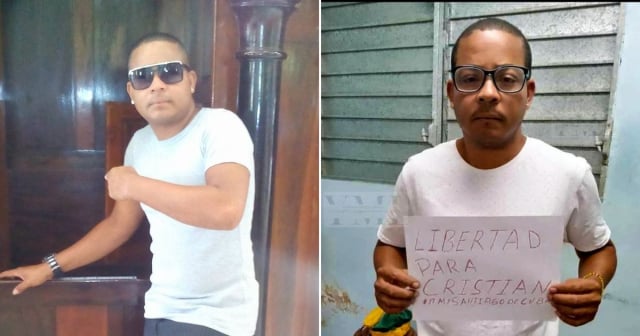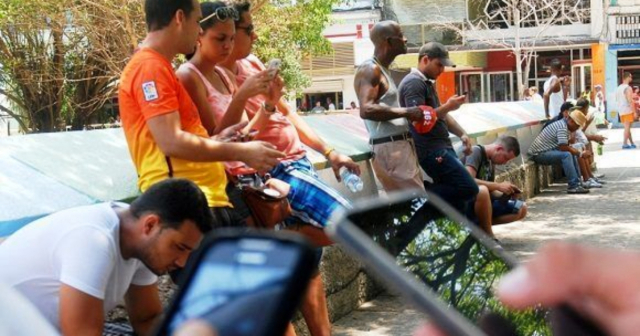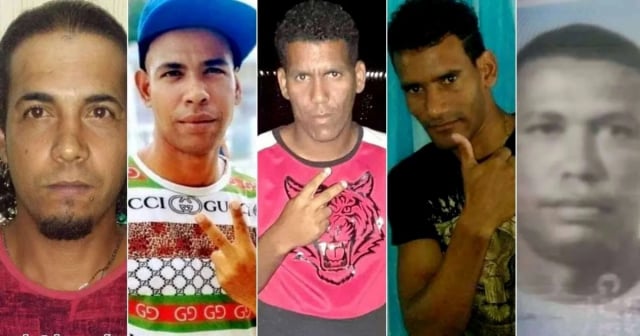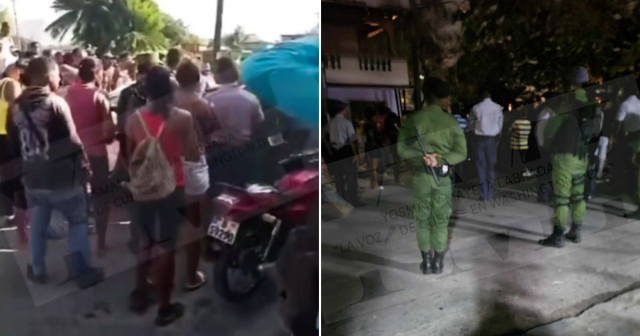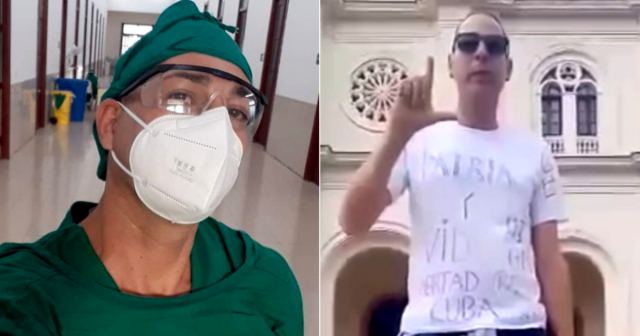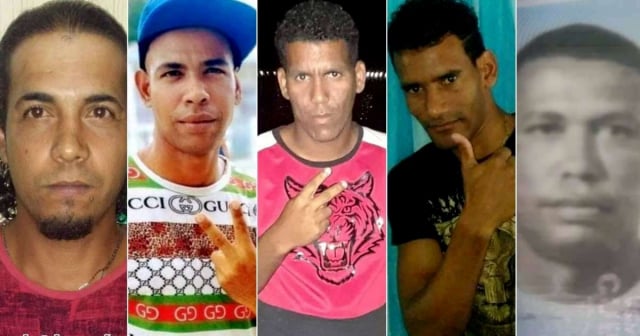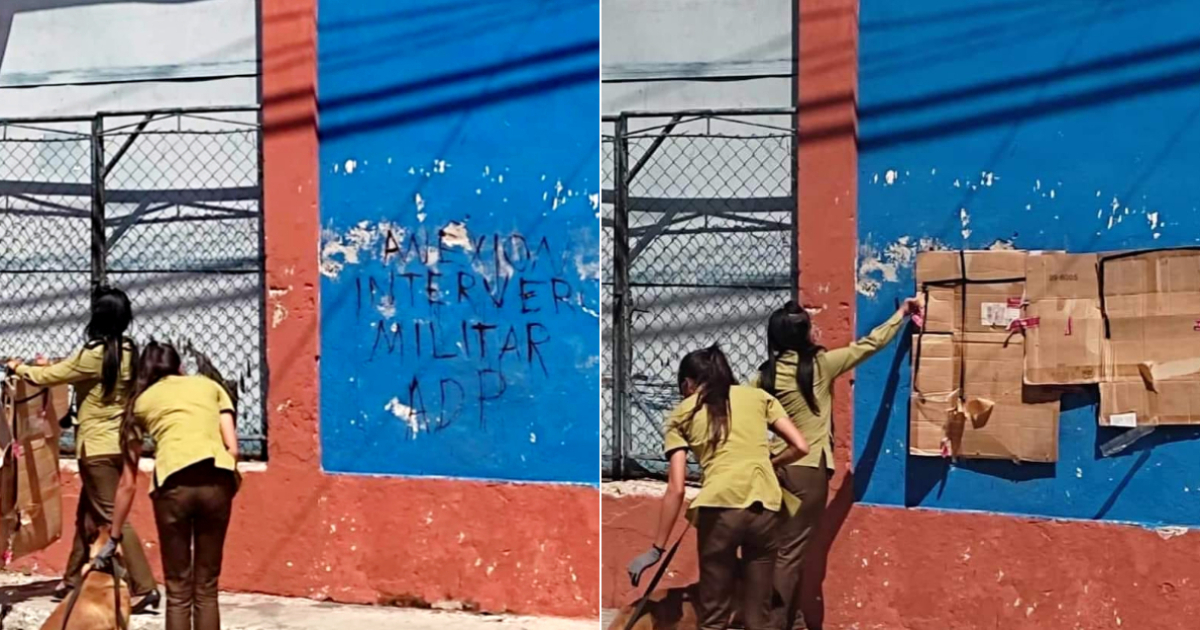
TheState Security This Saturday, Cuba covered a protesting poster written on a wall in Havana, using cardboard until the investigation at the site was completed and the wall could be repainted.
Images shared on social networks showed the police deployment at the scene, to which agents and experts from theMinisterio del Interior (MININT) to gather evidence, a task for which they also used a dog from the Canine Brigade to search for the perpetrators.
"Annexation. Military intervention. ADP”, read the graffiti apparently executed by members of the organization called Self-Defense Forces of the People (ADP).
The exact location where the events occurred is unknown. “Because of the Blockade, the government lacks paint to repaint the sign that appeared in Luyanó,” the user ofFacebook identified asEdmund Dantes Jr.
At the time of writing this note, the alleged ADP organization has not claimed responsibility for the action. Taking into account the antecedents related to it, it could be a new intimidating maneuver by State Security for which they use a supposed "terrorist" action such as a poster on a wall to inoculate fear amongCuban civil society.
The so-called People's Self-Defense Forces (ADP) They would be, according to the Cuban official media, a “counterrevolutionary” paramilitary group allegedly led by Cuban exiles and opponents.Manuel Milanes, Willy Gonzalez andAlfredo Gonzalez.
This organization, accused by the Cuban regime of sponsoring alleged terrorist actions on the island, would even have a so-called “War Council,” according to the presenter.Humberto Lopez in October 2022 in the programReasons for Cuba.
According to himMinistry of Foreign Affairs (MINREX), ADP's mission would be to “create disorder, chaos and fragment unity,” and they would be financed by the United States.
Afterthe protests unleashed at the end of August 2022 in Nuevitas, in which protesters took to the streets of the city to protest against blackouts of up to 18 hours a day and to ask for "Freedom",The police repressed the population and made several arrests.
Two months later, on his television program, López presented videos of self-incrimination of some of the protesters who remained arrested and charged with various crimes against State Security.
In the classic format of self-incriminating videos used by the repressive machinery of the totalitarian regime, several of the protesters allegedly testified to the instructions received to “incite violence, manipulate groups of people and articulate situations of internal destabilization.”
At the height of manipulation,López even showed photographs with weapons of alleged Cuban "terrorists", intended to attack the Island, which had actually been taken in 1999 in Kosovo
Among the people who “agreed” to offer testimony, López exhibitedMayelín Rodríguez Prado -known in networks as Chamaca del Chamaco-, the young woman who broadcast in a livethe testimony of some girls who were subjected to physical attacks by the policeduring the repression of the protests.
In addition to the young woman, State Security offered the alleged confessions ofLazaro Garcia Rios, Jimmy Johnson Agosto andYennys Artola del Sol, three young people who said they had been contacted by Cubans abroad who told them what type of actions they should commit to destabilize the regime.
Lázaro García explained the supposed operation of ADP, with a guerrilla plan and a War Council that “would provide logistical, financial and media support to people in Cuba, and would be chaired by the terrorist Manuel Milanés.”
“I was given guidance” to search online for people willing to engage in armed struggle, García Ríos said. For his part, Artola del Sol “confessed” that La Chamaca had proposed to him “to write a poster in the noodle factory. My thing was to film the poster and then send it to him. When I returned he asked me to film and take photos of another poster.”
Reasons for Cuba, with the notorious white-collar repressor at the helm, stated that the people who used these young people were planning landings, violent actions, and carrying the “torch of freedom” throughout Cuba.
The alleged existence of a network of “lone wolves” in Cuba (terrorists who act alone, without the support of a network), is part of the regime's strategy to discredit and defame activists on the island, or acts of protest. of citizens, and thereby manage to manipulate public opinion, hammering home the idea of “external aggression.”
Days ago, in the midst of a context where blackouts and general shortages exacerbate the population's unrest, the Cuban artistYulier Rodríguez published a video where you can identifya “Homeland and Life” poster, in view of passersby in Havana.
On Monday, March 18, one day afterthe protests carried out in different parts of Cuba, a sign against the ruler Díaz-Canel appeared in the city of Matanzas.
The event took place during the early hours of that same day, just hours after confirming amassive protest in the Matanzas town of Cárdenas, in which local residents took to the streets to protest with banging pots and pans.
“Díaz-Canel singao” Cuban civil society activists painted on the wall of the popular Playa del Tenis. Apparently, other slogans were erased or repainted by the police and other repressors of the Cuban regime.
What do you think?
SEE COMMENTS (3)Filed in:

